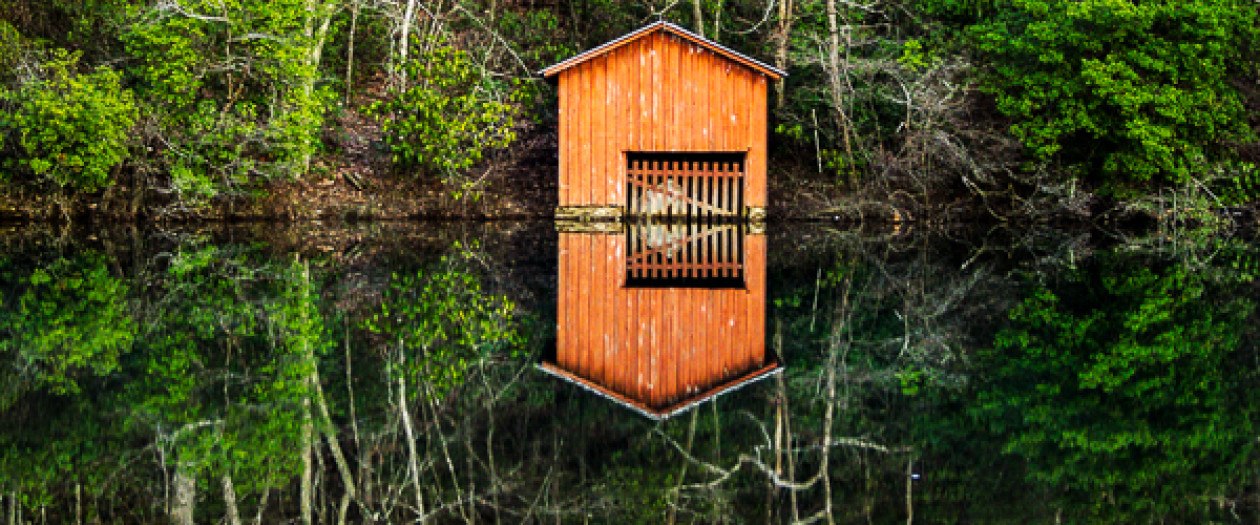What is shutter speed and why are we even talking about it? Shutter speed is pretty simple to understand. The easiest explanation is how fast your shutter snaps open and shut (like blinking your eyes). It is how you control both the amount of light and how you capture motion in your photos.
A slow shutter speed lets in more light, a fast shutter speed lets in less. Slower is often needed for dim lighting conditions, or to capture motion as a blur, and fast freezes motion and works really well in bright light. The trick is in finding a balance to capture the image you want.
For example, it is very difficult to freeze the action in a high school basketball game. Gyms are usually not well lit, requiring a longer shutter speed to let a lot of light reach the sensor. This usually results in blurry shots, because the players are moving too fast. (for simplicity, we are ignoring other factors that you can adjust as well).
 These photos were taken on an overcast day. The top one used a 1/100 sec to show the motion and energy in the swing of the bat.
These photos were taken on an overcast day. The top one used a 1/100 sec to show the motion and energy in the swing of the bat.
 The second photo nearly stops the balls motion at 1/500 sec.
The second photo nearly stops the balls motion at 1/500 sec.
As with aperture, standard shutter speed values cut the amount of light in half with each decreasing “stop” value. Standard values for full stops are: 1, ½, ¼, 1/8, 1/15, 1/30, 1/60, 1/125, 1/250, 1/500, 1/1000, 1/2000, 1/4000 of a second. The better the camera ($), the faster the shutter speed offered. DSLR’s today offer additional settings at 1/3 stops, to give you more control over your image.
One warning is about camera shake. We can’t hold the camera still enough at slow speeds to avoid blurring the image. A handy guideline is that the slowest you can hand hold a camera is the inverse of your lens’ focal length. For example with a 200 mm lens, I should be able to hold the camera with a shutter speed of 1/200 second, or faster. Any slower than this and you risk movement (your performance may vary, but this is close).
Tip: You can shoot with slower speeds with a tripod. To keep from having camera shake, use a shutter release, or use the time delay on our camera.
So, how about some general guidelines on where to start using various shutter speeds?
Tripod required
5-10 seconds – light painting, sparklers
2-5 seconds – fireworks
1/2 second – blur slow moving water
1/4 second – panning with people walking
1/8 second – blur fast moving water in a stream or river
1/15 second – blur objects in motion
1/30 second – panning cars whizzing by
No Tripod Needed
1/60 second – slowest recommended hand held speed
1/125 second – great for everyday photos
1/250 second – minimum speed for freezing motion or moving objects; photos of children at play – flash sync speed (most cameras will choose this shutter speed when using flash)
1/500 second – slower sports like soccer and basketball
1/1000 second – fast moving sports, sprinters at a track meet
1/2000 second – freezing cars whizzing by, very bright outdoor shots
1/4000 second – Fastest shutter speed on many DSLR’s – freezing really fast objects, like bee and humming bird wings.
1/4000 second, or faster – Available on higher end cameras ($)
This photo was taken at night with a 5 second exposure
So there you have it. Shutter speed is one of the three elements that you need to understand in controlling your exposures.

